#1914-18
Explore tagged Tumblr posts
Text




All Quiet on the Western Front - Edward Berger (2022).
#all quiet on the western front#à l'ouest rien de nouveau#film#history#world war#world war 1#world war one#great war#france#français#french#poilus#french army#french soldiers#14-18#1914-1918#war#historic#anthony paliotti#1918#première guerre mondiale#souvenir#the great war#trench#guerre#fight#defend#army#soldiers#netflix
13 notes
·
View notes
Text







Avec Christine, on a fêté nos 40 ans d'amitié en faisant un voyage de 15 jours en Sicile.
3 jours à Catane (Catania). La ville, le jour...
les 4 premières : la Piazza del Duomo avec la Fontaine de l'Eléphant....
....et la Fontana dell'Amenano
Piazza della Università, une plaque sur la Première Guerre
non loin, la chiesa Santa Maria dell'Elemonisa
#sicile#italie#catane#catania#piazza del duomo#fontaine#fontaine de l'éléphant#éléphant#fontana dell'amenano#piazza della università#piazza dell'universita#chiesa santa maria dell'elemonisa#baroque#première guerre mondiale#1914-1918#14-18
4 notes
·
View notes
Text
#OTD in Irish History | 18 September:
1830 – Sir Frederick Matthew Darley is born in Co Wicklow to an eminent Irish legal family. He was called to the Bar at the King’s Inn in 1853. Although he had a relatively successful career, he opted to emigrate to Australia in 1862 where he would go on to become the sixth Chief Justice of New South Wales, an eminent barrister, a member of the New South Wales Parliament, a Lieutenant Governor of…
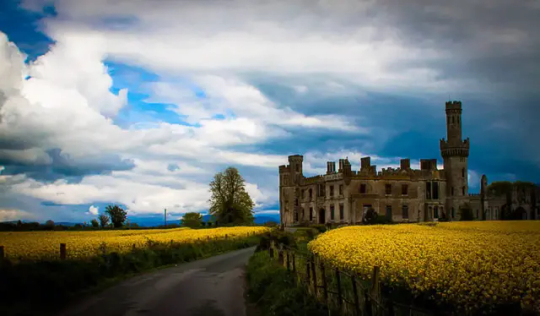
View On WordPress
#irelandinspires#irishhistory#OTD#18 September#© Aoife Mac Photography#Co Carlow#Duckett&039;s Grove#History#History of Ireland#Home Rule Act Suspended 1914#IRA#Ireland#Irish Civil War#Irish History#Sean O’Casey#Stephen Hayes#Today in Irish History
9 notes
·
View notes
Photo

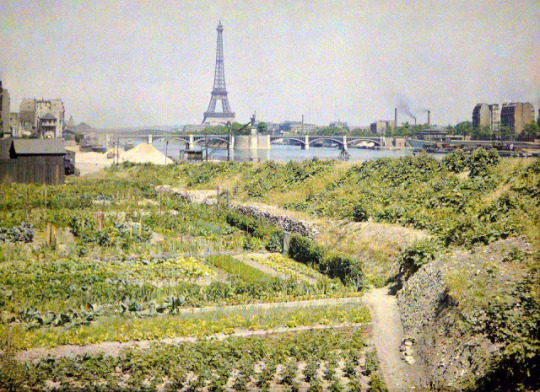
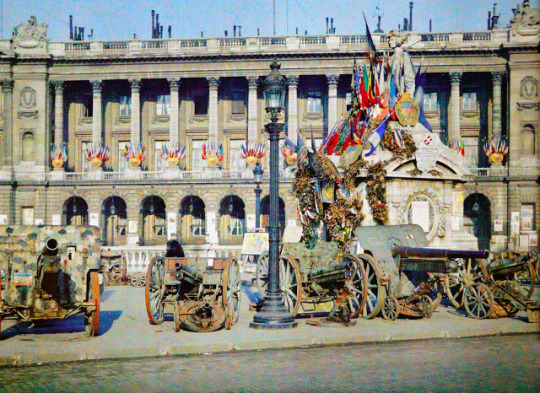



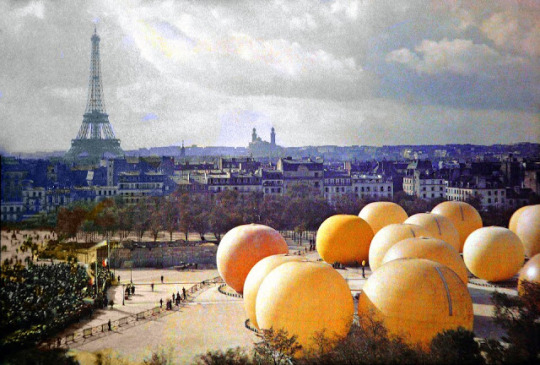
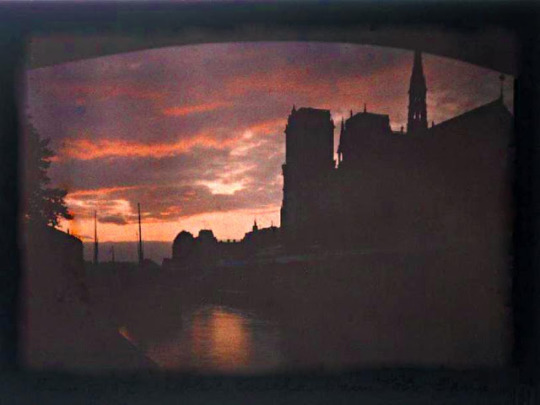
went to look for some more autochrome pictures of paris after seeing that post yesterday and it’s kinda freaky
1 note
·
View note
Text
A pub in the 1950s somewhere in Germany
Two men are sitting at a table and boasting about their war experiences. The first: "1914-18. Western Front. Iron Cross!" The second: "1939-45. Eastern Front. Knight's Cross!"
A wrinkled old man slowly stands up at the end of the room, limps slowly over to the two of them on his stick, and pulls himself upright in front of them: "1870-71. No medals, but: won the war, gentlemen!"
1K notes
·
View notes
Text
For some reason the thought of Arthur literally being EDWARDIAN is so crazy to me
Let's say he's like 35 (or around that age) and if the show is set in 1934 then my dude would've have grown up in the Edwardian Era (1901-1914)
AND AND AND I'M THINKING NOW ABOUT HOW HE WOULD HAVE BEEN AROUND FOR A BUNCHHH OF HISTORICAL EVENTS but not just Arthur, but basically every other character too
WW1 is the obvious one, but he also would have been around to remember when universal manhood suffage was passed in 1918 in England- He emigrated to the US at 17 and he was apparently too young to be drafted (the minimum age being 18 I think?) so I'm assuming he was around in England when the Representation of People Act was passed? I could be wrong, though
And NOELLLL
If Noel is middle-aged (40s-50s) he would have been a child in the victorian era 😭 that's so funny to imagine for some reason
Oh my god Daniel is from the victorian era that makes so much sense now
AND they all would've been around to see the suffragettes and to see women get the voteeee
Anddd they would've been there for the transition from ladies having long hair and minimal makeup to having those cunty bobs and cool makeup styles
#there's so much more but this post was only meant to be one sentence long#i'm a chronic yapper i'm so sorry#malevolent podcast#malevolent#arthur lester#noel finley#charlie dowd#detective noel#daniel saltzman
252 notes
·
View notes
Text
When Franz Kafka had "Written Nothing"
24 December 1910. It is midnight, but since I have slept very well, that is an excuse only to the extent that by day I would have written nothing. The burning electric light, the silent house, the darkness outside, the last waking moments, they give me the right to write even if it be only the most miserable stuff. And this right I use hurriedly. That’s the person I am.
28 November 1911. Have written nothing for three days.
07 January 1912. If I should now, in the evening, return to my relatives, I shall, since I have written nothing that I could enjoy, not appear stranger, more despicable, more useless to them than I,do to myself.
25 February 1912. I have written nothing for so long because of having arranged an evening for Löwy in the banquet room of the Jewish Town Hall on 18 February, at which I delivered a little introductory lecture on Yiddish. For two weeks I worried for fear that I could not produce the lecture. On the evening before the lecture I suddenly succeeded.
09 March 1914. I have written nothing for a year, nor shall I be able to write anything in the future; in my head there is and remains the one single thought, and I am devoured by it.
03 November 1914. Since August, the fourth day on which I have written nothing. The letters are the cause of it; I ’ll try to write none at all or only very short ones.
20 December 1921. Undeniably, there is a certain joy in being able calmly to write down: ‘Suffocation is inconceivably horrible.’ Of course it is inconceivable that is why I have written nothing down.
And When He "Wrote Nothing"
31 January 1912. Wrote nothing.
01 June 1912. Wrote nothing.
07 June 1912. Bad. Wrote nothing today. Tomorrow no time.
10 August 1912. Wrote nothing. Was in the factory and breathed gas in the engine-room for two hours. The energy of the foreman and the stoker before the engine, which for some undiscoverable reason will not start. Miserable factory.
13 March 1915. Got up at nine o’clock. Didn’t go home for supper, nor to Max’s either, where there was a gathering tonight. Reasons: lack of appetite, fear of getting back late in the evening; but above all the thought that I wrote nothing yesterday, that I keep getting farther and farther from it, and am in danger of losing everything I have laboriously achieved these past six months.
Excerpts from "The diaries of Franz Kafka 1910-1923"
#requested#franz kafka#literature#writeblr#dark academia#spilled ink#writing inspiration#writer's block#writing reference#kafka#writers on tumblr#writing prompt#poets on tumblr#poetry#diary#creative writing#lit#writing#light academia#quotes#writing resources
167 notes
·
View notes
Text


Band of Brothers Birthdays
January
1 John S. Zielinski Jr. (b. 1925)
21 Richard D. “Dick” Winters (b. 1918)
26 Herbert M. Sobel (b. 1912)
30 Clifford Carwood "Lip" Lipton (b. 1920)
31 Warren H. “Skip” Muck (b. 1922) & Robert B. Brewer (b. 1924)
February
8 Clarence R. Hester (b. 1916)
18 Thomas A. Peacock (b. 1920)
23 Lester A. “Les” Hashey (b. 1925)
March
1 Charles E. “Chuck” Grant (b. 1922)
2 Colonel Robert L. “Bob” Strayer (b. 1910)
4 Wayne “Skinny” Sisk (b. 1922)
10 Frank J. Perconte (b. 1917)
13 Darrell C. “Shifty” Powers (b. 1923)
14 Joseph J. “Joe” Toye (b. 1919)
24 John D. “Cowboy” Halls (b. 1922)
26 George Lavenson (b. 1917) & George H. Smith Jr. (1922)
27 Gerald J. Loraine (b. 1913)
April
3 Colonel Robert F. “Bob” Sink (b. 1905) & Patrick S. “Patty” O’Keefe (b. 1926)
5 John T. “Johnny” Julian (b. 1924)
10 Renée B. E. Lemaire (b. 1914)
11 James W. Miller (b. 1924)
15 Walter S. “Smokey” Gordon Jr. (b. 1920)
20 Ronald C. “Sparky” Speirs (b. 1920)
23 Alton M. More (b. 1920)
27 Earl E. “One Lung” McClung (b. 1923) & Henry S. “Hank” Jones Jr. (b. 1924)
28 William J. “Wild Bill” Guarnere (b. 1923)
May
12 John W. “Johnny” Martin (b. 1922)
16 Edward J. “Babe” Heffron (b. 1923)
17 Joseph D. “Joe” Liebgott (b. 1915)
19 Norman S. Dike Jr. (b. 1918) & Cleveland O. Petty (b. 1924)
25 Albert L. "Al" Mampre (b. 1922)
June
2 David K. "Web" Webster (b. 1922)
6 Augusta M. Chiwy ("Anna") (b. 1921)
13 Edward D. Shames (b. 1922)
17 George Luz (b. 1921)
18 Roy W. Cobb (b. 1914)
23 Frederick T. “Moose” Heyliger (b. 1916)
25 Albert Blithe (b. 1923)
28 Donald B. "Hoob" Hoobler (b. 1922)
July
2 Gen. Anthony C. "Nuts" McAuliffe (b. 1898)
7 Francis J. “Frank” Mellet (b. 1920)
8 Thomas Meehan III (b. 1921)
9 John A. Janovec (b. 1925)
10 Robert E. “Popeye” Wynn (b. 1921)
16 William S. Evans (b. 1910)
20 James H. “Moe” Alley Jr. (b. 1922)
23 Burton P. “Pat” Christenson (b. 1922)
29 Eugene E. Jackson (b. 1922)
31 Donald G. "Don" Malarkey (b. 1921)
August
3 Edward J. “Ed” Tipper (b. 1921)
10 Allen E. Vest (b. 1924)
15 Kenneth J. Webb (b. 1920)
18 Jack E. Foley (b. 1922)
26 Floyd M. “Tab” Talbert (b. 1923) & General Maxwell D. Taylor (b. 1901)
29 Joseph A. Lesniewski (b. 1920)
31 Alex M. Penkala Jr. (b. 1924)
September
3 William H. Dukeman Jr. (b. 1921)
11 Harold D. Webb (b. 1925)
12 Major Oliver M. Horton (b. 1912)
27 Harry F. Welsh (b. 1918)
30 Lewis “Nix” Nixon III (b. 1918)
October
5 Joseph “Joe” Ramirez (b. 1921) & Ralph F. “Doc” Spina (b. 1919) & Terrence C. "Salty" Harris (b. 1920)
6 Leo D. Boyle (b. 1913)
10 William F. “Bill” Kiehn (b. 1921)
15 Antonio C. “Tony” Garcia (b. 1924)
17 Eugene G. "Doc" Roe (b. 1922)
21 Lt. Cl. David T. Dobie (b. 1912)
28 Herbert J. Suerth Jr. (b. 1924)
31 Robert "Bob" van Klinken (b. 1919)
November
11 Myron N. “Mike” Ranney (b. 1922)
20 Denver “Bull” Randleman (b. 1920)
December
12 John “Jack” McGrath (b. 1919)
31 Lynn D. “Buck” Compton (b. 1921)
Unknown Date
Joseph P. Domingus
Richard J. Hughes (b. 1925)
Maj. Louis Kent
Father John Mahoney
George C. Rice
SOURCES
Military History Fandom Wiki
Band of Brothers Fandom Wiki
Traces of War
Find a Grave
#this is going off who was on on the show#i double checked the dates and such but if you notice any mistakes please let me know :)#band of brothers#easy company#hbo war#not gonna tag everyone lol#mine: misc#yep it's actually Halls and not Hall#i've seen Terrence Harris's name spelled with as Terence but wenand t with two Rs s#since that's how it's spelled on photos of memorials and on his gravestone#I’ll do the pacific next! should be significantly shorter since there’s far fewer characters 😅
147 notes
·
View notes
Photo
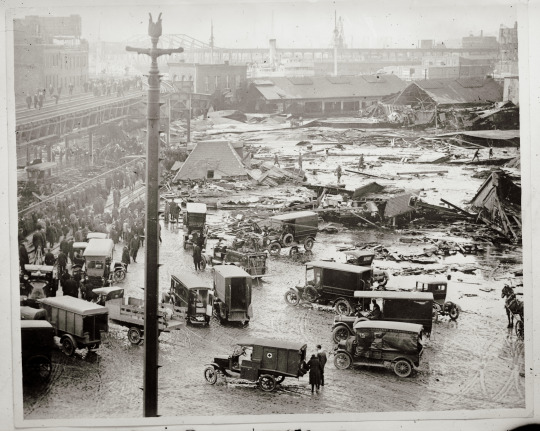
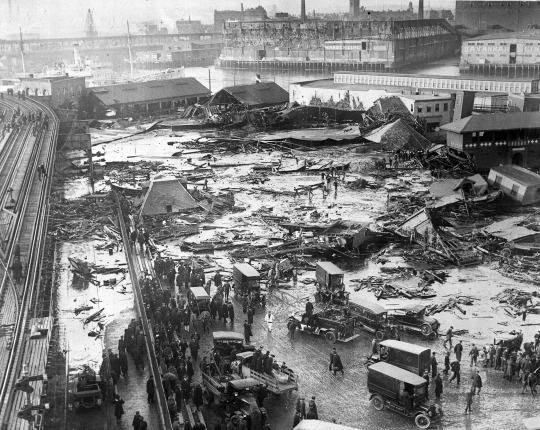

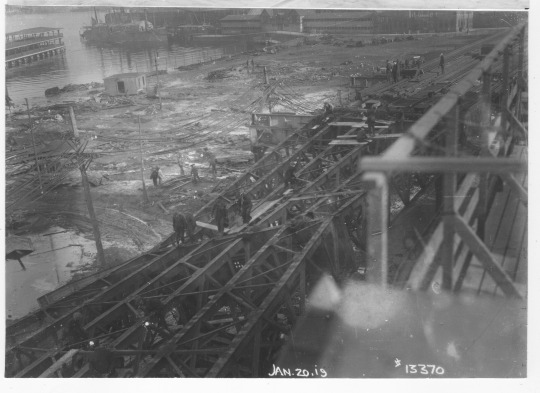

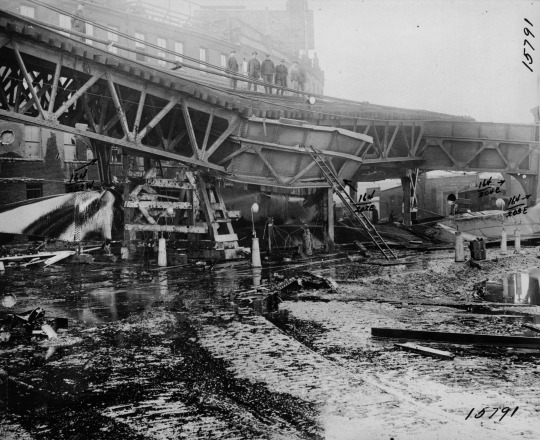
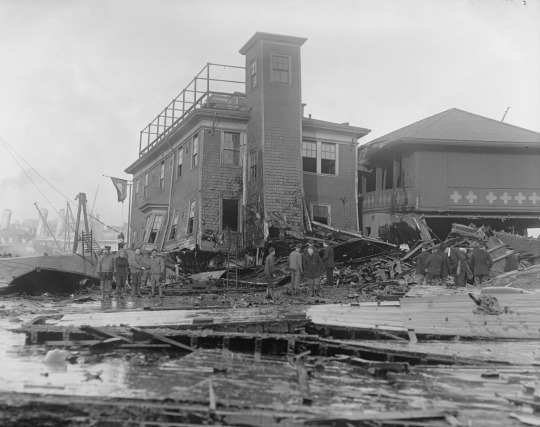
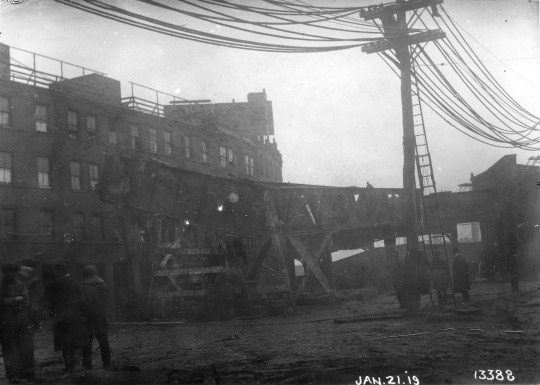
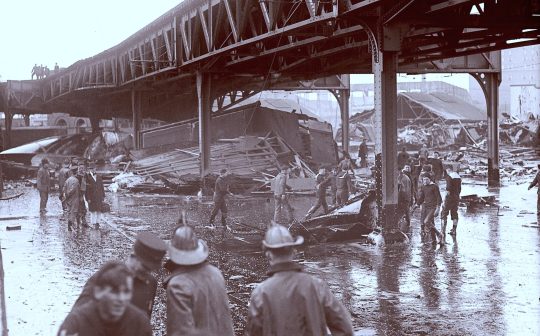
The Great Molasses Flood was a disaster in Boston that occurred after a storage tank collapsed on January 15, 1919, sending more than two million gallons (eight million litres) of molasses flowing through the city’s North End. The deluge caused extensive damage and killed 21 people.
The tank was built in 1915 along Boston’s waterfront on Commercial Street, opposite Copp’s Hill. It was operated by the Purity Distilling Company, a subsidiary of United States Industrial Alcohol (USIA). At the time, industrial alcohol—then made from fermented molasses—was highly profitable; it was used to make munitions and other weaponry for World War I (1914–18). The tank’s immense size reflected the demand: it measured more than 50 feet (15 metres) high and 90 feet (27 metres) in diameter and could hold up to 2.5 million gallons (9.5 million litres) of molasses. Built quickly, the tank was problematic from the start, leaking and often emitting rumbling noises. Nevertheless, it continued to be used, and after the war’s conclusion USIA focused on producing grain alcohol, which was in high demand as prohibition neared passage.
At approximately 12:30 PM on January 15, 1919, the tank burst, releasing a deluge of “sweet, sticky death.” According to reports, the resulting wave of molasses was 15 to 40 feet (5 to 12 metres) high and some 160 feet (49 metres) wide. Traveling at approximately 35 miles (56 km) per hour, it destroyed several city blocks, leveling buildings and damaging automobiles. Although help arrived quickly, the hardening molasses made rescue efforts difficult. In the end, 21 people were killed, many of whom were suffocated by the syrup, and approximately 150 were injured. In addition, the Boston Post noted that a number of horses had “died like so many flies on sticky fly paper.” Clean-up efforts lasted for weeks, and Boston reportedly continued to smell like molasses for years afterward.
Numerous lawsuits were filed in the wake of the disaster. While victims alleged that the tank was not safe, USIA claimed that it had been sabotaged by “evilly disposed persons.” In 1925, however, it was ruled that the tank was unsound, and USIA was ordered to pay damages. In addition, the disaster resulted in stricter construction codes being adopted by states across the country.
For years, questions were raised over how such a seemingly benign substance could have caused so many deaths. In 2016, researchers released a study that placed the blame on cold temperatures. While warm weather would have caused the molasses to be less viscous, the winter temperatures made the syrup markedly thicker, severely impeding rescuers.
597 notes
·
View notes
Text

Gerome Kamrowski (American, 1914-2004), Wanderlust, 1940. Ink and gouache on paper, 24 × 18 in.
189 notes
·
View notes
Text
If I love poetry, it's because I have a soul made for poetry. My habitual dreaminess, my impatience have nothing to do with my intelligence, but rather with my disposition. One of these days, I shall talk about the things in myself that I don't understand.
Anaïs Nin, in a diary entry written January 18 1917 from Linotte: The Early Diary of Anaïs Nin, 1914–1920
597 notes
·
View notes
Text

Glyn Philpot (British, 1884-1937), Under the Sea, c. 1914-18. Oil on canvas, 60 x 60 in.
136 notes
·
View notes
Text














BOBSTROLOGY
A completely serious presentation by @pegasusdrawnchariots and oatflatwhite
written version under the cut!
♈️Patrick O’Keefe [April 3 1926] ♈️Robert Sink [April 3 1905] ♈️John Julian [5 April 1924] ♈️Renée Lemaire [10 April 1914] ♈️James Miller [11 April 1924] ♈️Walter “Smokey” Gordon [April 15 1920] ♉️~Ronald Speirs [April 20 1920] ♉️Alton More [April 22 1920] ♉️Henry Jones [27 April 1924] ♉️Edward “Babe” Heffron [May 16 1923] ♉️John Martin [May 12 1922] ♉️Joseph Liebgott [May 17 1915] ♉️Norman Dike [May 19 1918] ♉️William Guarnere [April 28 1923] ♊️David Webster [June 2 1922] ♊️George Luz [June 17 1921] ♊️Roy Cobb [June 18 1914] ♋️Frederick “Moose” Heyliger [June 23 1916] ♋️Albert Blithe [June 25 1923] ♋️Donald Hoobler [28 June 1922] ♋️Thomas Meehan [8 July 1921] ♋️John Janovec [9 July 1925] ♋️Robert “Popeye” Wynn [July 10 1921] ♋️James "Moe" Alley [July 20 1922] ♌️~Burton “Pat” Christenson [July 23 1922] ♌️Eugene Jackson [29 July 1922] ♌️Donald Malarkey [July 31 1921] ♌️Edward Tipper [3 August 1921] ♍️Floyd Talbert [August 26 1923] ♍️Alex Penkala [August 30 1922] ♍️William Dukeman [3 September 1921] ♎️Eugene Roe [October 17 1922] ♎️Harry Welsh [September 27 1918] ♎️Lewis Nixon [September 30 1918] ♎️Ralph Spina [October 5 1919] ♎️Thomas Peacock [October 9 1923] ♏️Denver “Bull” Randleman [November 20 1920] ♑️Lynn “Buck” Compton [December 31 1921] ♑️Antonio Garcia [January 17 1925] ♒️Richard "Dick" Winters [January 21 1918] ♒️Herbert Sobel [January 26 1912] ♒️Carwood Lipton [January 30 1920] ♒️Warren “Skip” Muck [January 31 1922] ♓️Lester Hashey [23 February 1925] ♓️Charles “Chuck” Grant [1 March 1922] ♓️Robert Strayer [March 2 1912] ♓️Wayne “Skinny” Sisk [March 4 1922] ♓️Frank Perconte [March 10 1917] ♓️Darrell “Shifty” Powers [March 13 1923] ♓️Joseph Toye [March 14 1919]
6 Aries 🥉 8 Taurus 🥇 3 Gemini 7 Cancer 🥈 4 Leo 3 Virgo 5 Libra 1 Scorpio 0 Sagittarius 🥄 2 Capricorn 4 Aquarius 7 Pisces 🥈
10 🔥 13 🪨 12 💨 15 💧
20 cardinal 17 fixed 13 mutable
22 masculine 28 feminine
#band of brothers#hbo war#bobedit#hbowaredit#bobstrology#astrology#liz makes things#disclaimer: our interpretation is ironclad. we alone decide the law. argue w the wall.#< we say as an aries and scorpio with renee and bull in our corners <3
205 notes
·
View notes
Text




"Vous ne les laisserez pas passer (You shall not let them pass)!"
French General Robert Nivelle
At the start of WWI, the French army wore bright blue jackets and red trousers, a tradition that dated back to the 19th century. These vibrant colors made soldiers easy targets, and the uniforms quickly proved impractical for modern warfare. In response, by 1915, the French military introduced the "horizon blue" uniform—a more muted, gray-blue color intended to blend in with the environment. This change marked a shift towards practicality and camouflage, with additional modifications, such as steel Adrian helmets replacing cloth caps, to better protect soldiers in trench warfare. Less drip, more practicality; I tried to include a uniform from each year.
From The French Army 1914–18
#world war 1#great war#the great war#military art#french history#military#france#soldier#french uniform#uniform#historical art
74 notes
·
View notes
Photo

C. F. A. Voysey, Birds of Many Climes, ca. 1914–18 Textile design drawing in watercolor, framed in a bespoke gilt frame Victoria and Albert Museum
1K notes
·
View notes
Photo

Nazi-Soviet Pact
The Nazi-Soviet Pact, also called the Molotov-Ribbentrop Pact after the respective foreign ministers of the USSR and Germany, was a non-aggression agreement signed in August 1939. The pact allowed the leader of Nazi Germany Adolf Hitler (1889-1945) to attack Poland and then Western Europe without having to face at the same time a Soviet army. Meanwhile, the leader of the USSR Joseph Stalin (1878-1953) acquired freedom of action in Eastern Europe and bought valuable time to continue rearmament.
The Nazi-Soviet Pact carved up Central and Eastern Europe into two spheres of influence between the two signees, led to direct occupations of free countries, and directly influenced where much of the fighting occurred in the first two years of the Second World War (1939-45). The agreement was, though, shattered when Germany attacked the USSR in June 1941.
Hitler's Foreign Policy
In order to understand why the USSR signed a treaty with Germany and not Britain or France in 1939, it is necessary to retrace the hectic developments in European affairs through the 1930s. When Adolf Hitler took power in Germany in 1933, he set out on an aggressive foreign policy of absorbing neighbouring territories. This was something Hitler had written about in his 1925 book Mein Kampf where he described the need for Lebensraum ('living space') for the German people, that is, new lands where they could prosper. This land would be sought for in the East. In addition, Hitler had long promised the German people that he would overturn the humiliating losses and restrictions imposed by the Treaty of Versailles that formally concluded the First World War (1914-18), which Germany had lost. The Saar region was taken back (1935), the Rhineland was remilitarised and Germany began to rearm (1936), then Austria was absorbed into Hitler's Third Reich (1938). In 1938, Hitler looked to Czechoslovakia.
The League of Nations (the forerunner of today's United Nations), which had been created after WWI to promote world peace, had proved itself to be inadequate when it came to aggressor states attacking weaker states. This weakness was particularly evident when Japan invaded Chinese Manchuria in 1931 and Italy invaded Abyssinia (Ethiopia) in 1935. Hitler's aggression also failed to rouse any meaningful response from the League. The USSR's leader Joseph Stalin must have watched all of these events with dismay as Germany expanded eastwards.
Europe on the Eve of WWII, 1939
Simeon Netchev (CC BY-NC-ND)
Continue reading...
57 notes
·
View notes